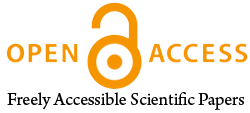Abstract Volume:8 Issue-10 Year-2020 Original Research Articles
 |
Online ISSN : 2347 - 3215 Issues : 12 per year Publisher : Excellent Publishers Email : editorijcret@gmail.com |
Pollination is a critical link in the functioning of ecosystems and it improves the yield of crops. Honeybees are responsible for 70-80% of insect pollination. As a result the need for insect pollination is becoming popular by agricultural community to increase the productivity of crops. Hence, this study was conducted to evaluate the effect of honeybee pollination on fruit yield and yield contributing parameters of watermelon (Citrullus lanatus L.). The study was conducted in a randomized complete block design (RCBD) with three treatments and three replications in an experimental plot size of 4m x 6m. Treatments applied were: (i) plots caged with bees (T1), (ii) open plots allowing free visits of bees + other pollinators (T2) and (iii) plots caged without bees (control-T3). The obtained data related to fruit yield and other yield parameters were statistically analyzed using one way analysis of variance (ANOVA). The results revealed that the highest fruit yield was found in fruit crops caged with honeybee (57472 kg/ha) followed by open pollinated fruit crops (38361 kg/ha), whereas fruit crops excluded from insect had the lowest fruit yield (22472 kg/ha). So it concluded that honeybee and insect pollination had a significant effect on fruit yield and quality of watermelon. Therefore, it is recommended to keep sufficient number of honeybee colonies in watermelon fields during the flowering period to increase the pollination efficiency and thereby enhance watermelon fruit productivity.
How to cite this article:
Taye Beyene and Mekonen Woldatsadik. 2020. Effect of Honeybee (Apis mellifera L.) Pollination on Fruit Yield and Yield Contributing Parameters of Watermelon (Citrullus lanatus L.).Int.J.Curr.Res.Aca.Rev. 8(10): 86-93doi: https://doi.org/10.20546/ijcrar.2020.810.010



Quick Navigation
- Print Article
- Full Text PDF
- How to Cite this Article
- on Google
- on Google Scholor
- Citation Alert By Google Scholar
